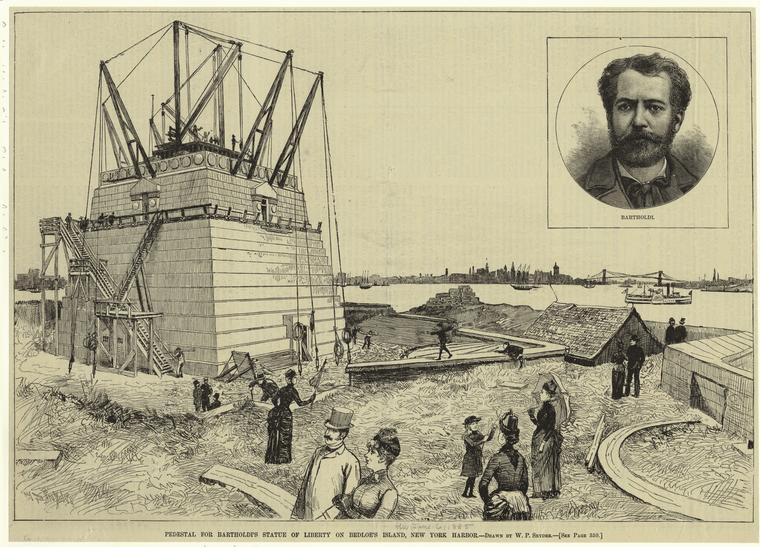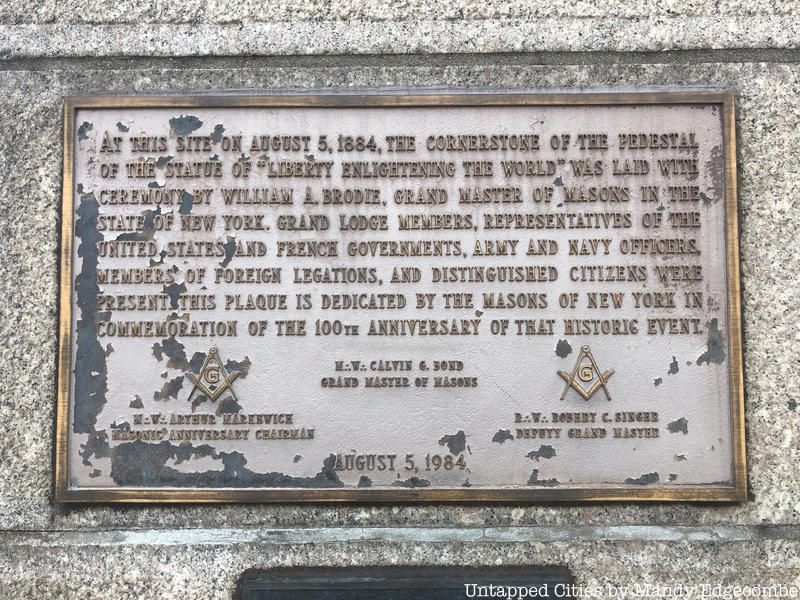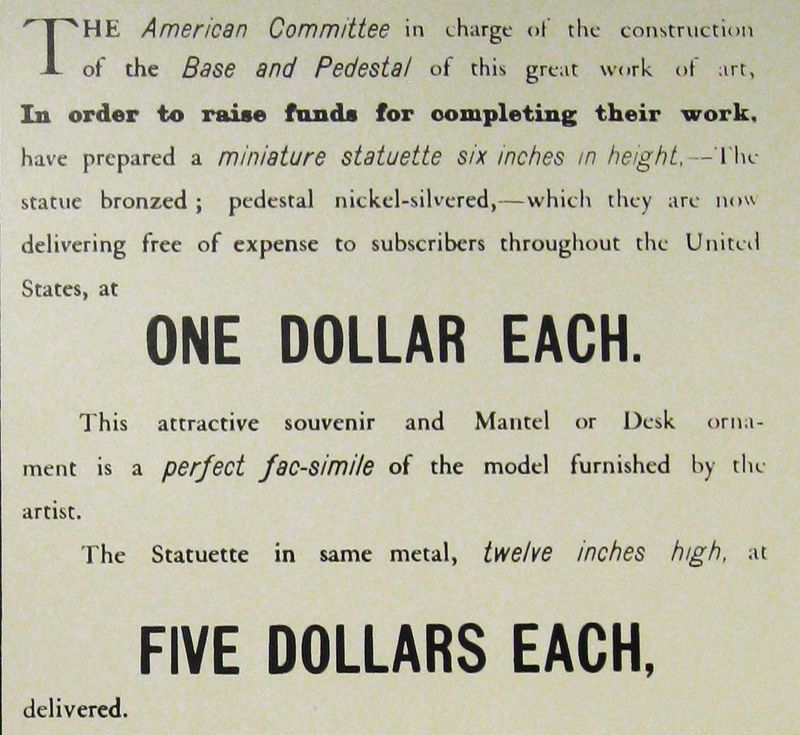Last-Minute NYC Holiday Gift Guide 🎁
We’ve created a holiday gift guide with presents for the intrepid New Yorker that should arrive just in time—


On August 5, 1884 the cornerstone of the Statue of Liberty’s pedestal was ceremoniously placed on Bedloe’s Island.
The Statue of Liberty or “Liberty Enlightening the World” was the brainchild of Edouard de Laboulaye, a French professor, political philosopher and anti-slavery activist who, after the Union’s victory in the American Civil War, felt America had an ideal republic that he wanted to replicate in France. To this end he came up with an idea that would send a clear democratic message to the French people. According to that mammoth historical tome Gotham, Laboulaye cooked up “the idea of having a collaborative Franco-American group erect a statue in America, far enough away to avoid provoking a monarchist backlashing, yet close enough to foster a republican image for France.” The statue itself would be designed by Frederic Auguste Bartholdi with Gustave Eiffel designing the inner structural supports. And although the French government and its star creative team were gifting the statue to America, America had to fund and build the pedestal it would stand on.
 Construction of The Statue of Liberty pedestal. The inside walls were poured concrete with a granite block facing. Image from New York Public Library.
Construction of The Statue of Liberty pedestal. The inside walls were poured concrete with a granite block facing. Image from New York Public Library.
Bedloe’s Island (formally known as Great Oyster Island) was chosen to host Lady Liberty for two reasons: its position at the opening of New York harbor and the fallow army fort that sat on its shores. Fort Wood was built in 1807 and abandoned after its term as a recruitment center during the Civil War. The pedestal’s designer Richard Morris Hunt was attracted to the fort’s foundation because it was built in the shape of an eleven-point star. Hunt intended to align his design with the star-shaped stone base to ensure that pedestal and statue would deliberately face southeast so it could be seen by ships coming into the harbor from the Atlantic.

A rare photo of Fort Wood on Bedloe’s Island (Now Liberty Island) Here Union artillery men are manning the battery guns during the Civil War. Photo from New York Public Library.
Hunt’s design was intentionally sparse as not to draw attention away from the statue. Its original dimensions had the pedestal raising 114 feet into the air but raising money for the pedestal project was a struggle so he was forced to cut it down to 89 feet. That wasn’t the only sacrifice. Hunt wanted the entire structure to be solid granite, but cost cutting measures forced him to use poured concrete walls covered with a granite-block face.
Back on August 5, 1884, “the rain was pouring down in torrents” which effectively kept away hundreds of ceremony invitees. Yet according to the New York Times, 1500 water-logged people still jammed onto the small island to be part of the historic event. About a third of the attendees were French.
The steamship Bay Ridge was festooned with French and American flags and chosen to shuttle people from Manhattan to Bedloe Island. Because of the driving rain “its capacity was not tested.” Once the ceremony began the David Island Government Band played “Marseillaise” and “Hail Columbia” respectively while men lowered the six ton granite stone onto the northeast corner of Fort Wood’s foundation.

Under the cornerstone was a square hole dug to house a time capsule. In a copper box officials placed:
“Cards of the people present, which were showered in. Copies of the Constitution and the Declaration of Independence, a number of medals, a list of the Grand Lodge Masons of the State, the daily papers, and other articles deemed appropriate.”
Also in there was a coin inscribed with General John Adams Dix’s pearls of wisdom: “If any man attempts to haul down the American flag shoot him on the spot!”
As mentioned above, funding seemed to be a constant issue for the Liberty pedestal project. After the Financial Panic of 1873 the country was slow to spend frivolously. Also post Civil War Americans were more interested in heroic artworks not allegorical symbols while others remained miffed that America had to foot the bill for a French gift. At the time of the cornerstone’s dedication only $145,000 had been raised leaving a $100,000 delta. The Times article left its readers with a cliff hanger:
“The builder had been notified to stop if funds were not forthcoming. The committee hoped it would not be necessary to cease operations. If the work is not interrupted it will be entirely completed and ready for the statue Nov. 1.”

Joseph Pulitzer’s ad in the New York World calling on all readers to crowd fund the statues pedestal.
Spoiler alert: They raised the money… through crowdfunding. Joseph Pulitzer himself started a campaign in his newspaper, the New York World. He called on private citizens to not “wait for the millionaires to give us the money.” It was called the “Pedestal Fund” and it was wildly successful. According to Vox, it was a proto-Kickstarter project in every way. If you donated a $1 you received a six inch statue replica or $5 would get you a $12 inch replica. Over 125,000 people donated.
It’s also worth noting that on August 3, 2004 (also this week in New York City history) the pedestal was reopened to visitors after being shut down for post 9-11 security concerns.
Next, read about the Top 10 Secrets of the Statue of Liberty and the fun facts about its torch.
Subscribe to our newsletter